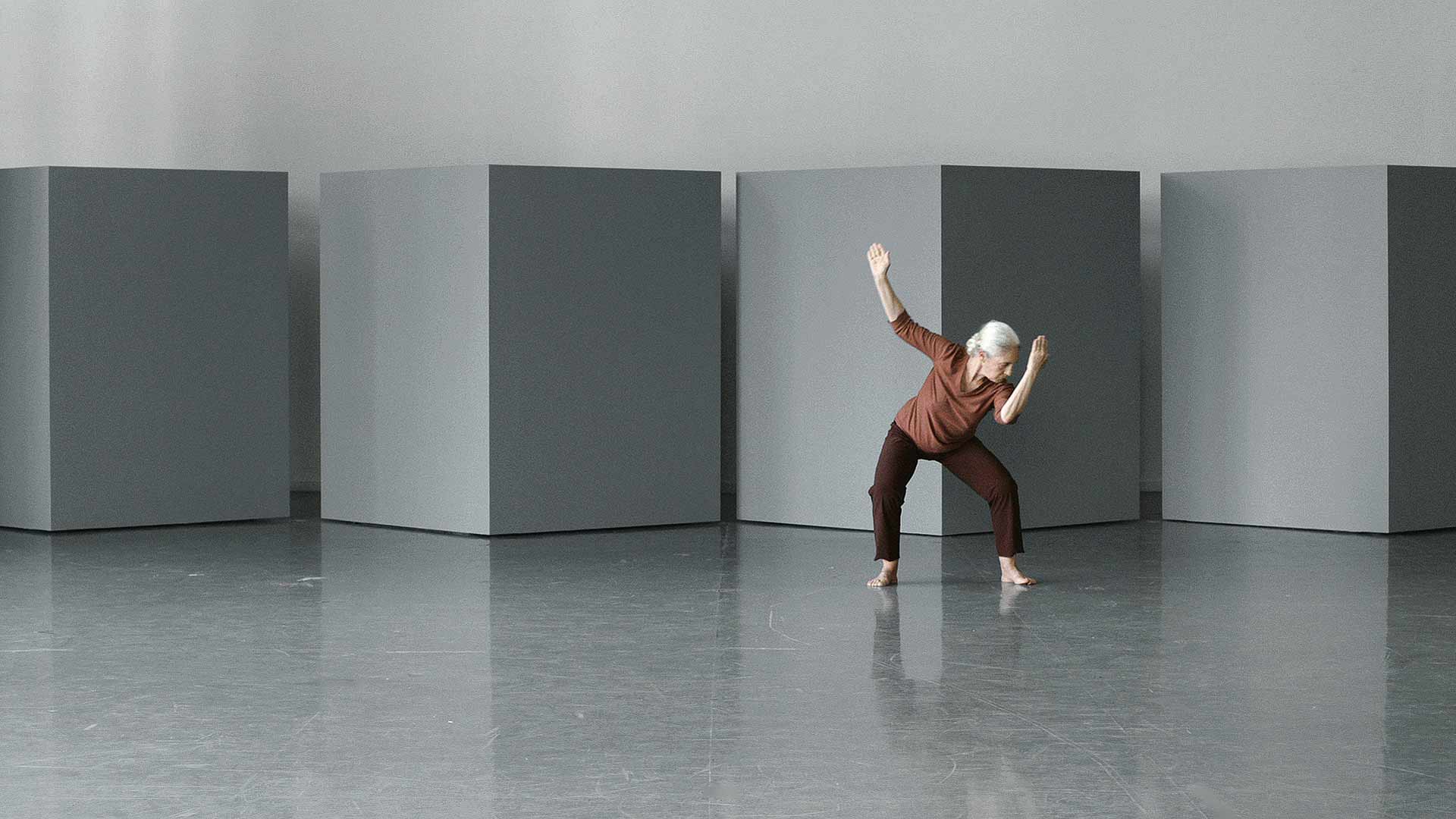Sharon Lockhart. Rotation Notation
11.04.2021 - 02.27.2022
The Film & Video exhibitions program at the Guggenheim Museum Bilbao is permanently committed to artistic practices associated with the moving image, and explores the critical relationship between visual arts, film-based installation, and contemporary culture at large.
Engaging a multiplicity of media, the works of Sharon Lockhart (b. 1964, Norwood, USA) pay particular attention to human activity and its modes of organization, be it social or solitary. Ranging from labor to sport, and from child’s play to choreography, Lockhart’s films specifically confront the complexity and poetic depth of seemingly simple movements. Tight and disarming, her works are exercises in observation that ultimately blur the lines between body and camera, staged representation and audience vantage point. As documenting and performing appear as one, the world’s existence turns tensely palpable in the very fact of its being documented. As the stillness of the lens emphasizes the modern aspiration to technical objectivity, situations are presented as though they were recording themselves.
Lockhart pushes the mechanics of cinema into a form of meditative self-reflection, a framework in which performers—actors, subjects, bodies—manifest as concrete bearers of presence, gesture, and relation. The artist’s consideration of the consistency and limits of authorship are intrinsic to her research on objectivity and the automated reproduction of visual reality at 24 photographic frames per second. Reality makes the film as much as the filmmaker, and once movement and light are encoded into film they can be reanimated and analyzed through endless playback. In this sense, Lockhart’s encounter with the works of Israeli choreographer Noa Eshkol (b. 1924, Kibbutz Degania Bet; d. 2007, Holon, Israel) not only furthered her formal exploration of human motion, but also expanded the collaborative dimension of her work through her engagement with Eshkol’s manifold and largely communally-enacted practice. Lockhart’s series of video installations and photographs, based on Eshkol’s legacy, exemplify an artistic dialogue that, on the one hand, has been crucial for the contemporary rediscovery of the latter’s oeuvre. On the other hand, they demonstrate how deeply Lockhart understands artistic media as common vehicles of hospitality and shared agency.
In the installation Four Exercises in Eshkol-Wachman Movement Notation (2011), the dancer Ruti Sela—a collaborator of Eshkol’s and member of her Chamber Dance Group from 1969 until her recent passing—executes calculated movements among four identical grey volumes, designed by Lockhart to reference the space that the dancer’s body occupies as she moves through each exercise. Changing composition for each of the four dances featured, the volumes are sized according to the dancer’s measurements. The height of each volume is equal to her height with raised arms, while the width of each is her wingspan. In an act of tribute and appropriation, the careful succession of actions in Lockhart’s work epitomizes the notation system developed by Eshkol and the architect Avraham Wachman in 1958. This rigorous method, known as EWMN, is capable of registering the entire range of a body’s potential motions and is still used today in dance scores, the study of animal locomotion, and the diagnosis of behavioral disorders such as autism or Asperger’s syndrome. In developing an inventory of numerals and symbols, Eshkol and Wachman used a set of spherical models in which possible rotations of the joints and limbs of the human body could be inscribed. These spheres are contemplated in a series of photographs by Lockhart, titled Models of Orbits in the System of Reference, Eshkol-Wachman Movement Notation System (2011), a selection of which is displayed at the entrance of the Museum’s gallery. Within the circular framework of metallic wire, conical shapes made out of mesh represent the path of a gesture in space. Bearing resonances from Eadweard Muybridge’s pre-cinematic studies of bodies in motion, Lockhart’s photographs capture the spinning orbs, yielding entirely different forms. These may be correlated to the performer’s action in the video, as her moves materialize various sequences from Eshkol’s scripts. The performer’s meticulous gestures and positions are expressive without being figurative. They remain simple and unfamiliar—they are abstract yet opposed to the stark angularity of the gray volumes both behind the dancer and throughout the installation’s space. Sela is enigmatically present and entirely focused, charting the paths of her every limb, and freely navigating the spatial possibilities of her discipline.
This exhibition is the result of a special collaboration between the Guggenheim Museum Bilbao, Thyssen-Bornemisza Art Contemporary (TBA21), and The Wellbeing Project.
Curator: Manuel Cirauqui
Sharon Lockhart
Four Exercises in Eshkol-Wachman
Movement Notation, 2011
Single-channel video installation (color, silent), projection wall
Thyssen-Bornemisza Art Contemporary Collection
Still: Courtesy the artist, neugerriemschneider, Berlin, and Gladstone Gallery, New York and Brussels.

